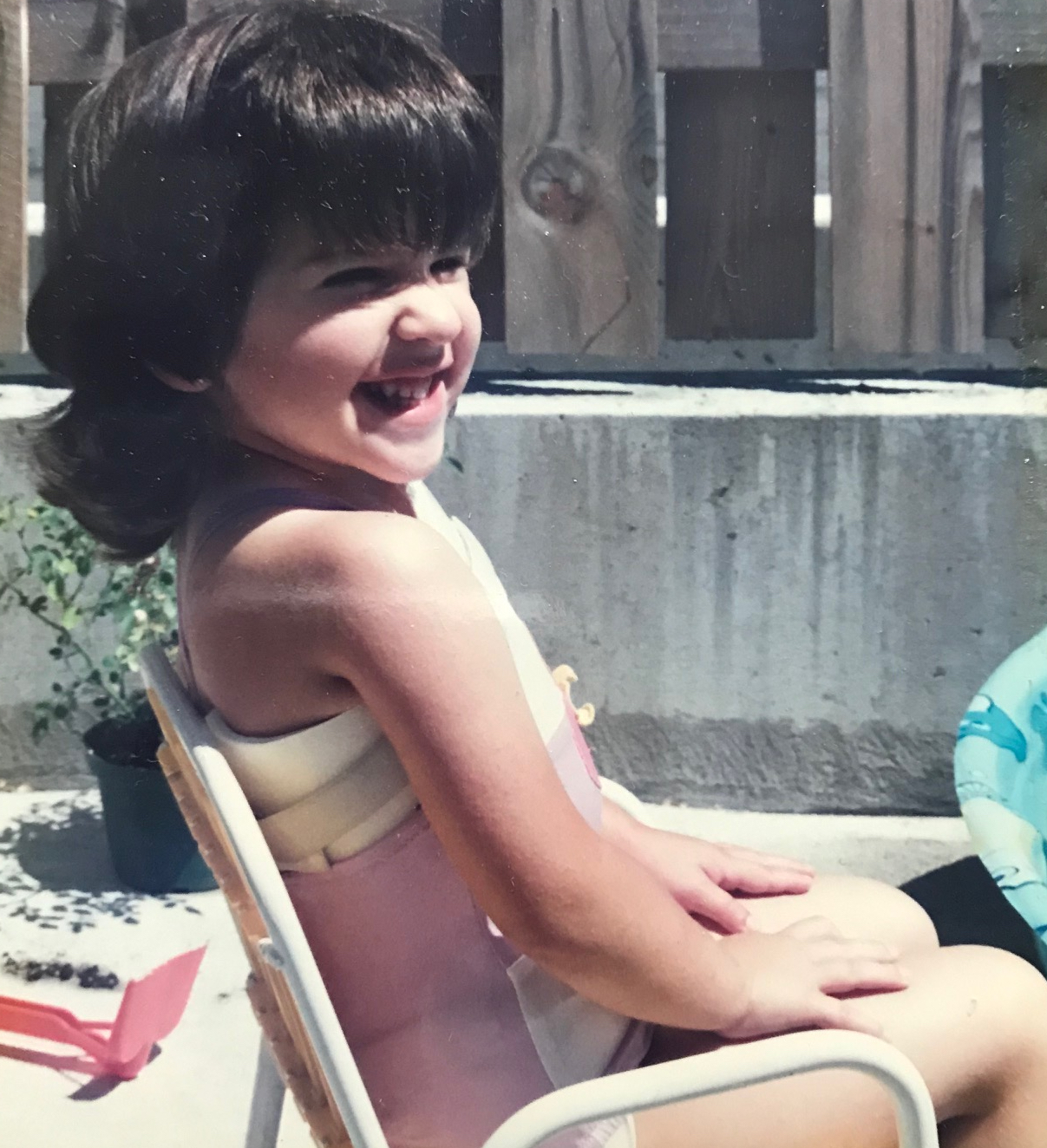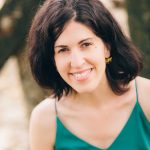
I was seven years old when the ADA was born. I had already been on the other side of major surgery – spinal fusion for scoliosis paired with years of bracing – but the language of disability wasn’t yet part of my life. I only have vague memories of the surgery itself. Salient memories that rippled outward: hating the sound of Velcro, overhead lights at the dentist, the awkwardness of the brace following me into my pre-teen years and then evaporating from the stories I told about myself into adulthood.
Disability re-entered my life 24 years after the ADA, two years into the tenure-track for my dream academic job, three years into my life as a Mom. Days of intense headaches, tingling and then, slow left-side paralysis sent me to ERs and then ICUs. After weeks of gradual paralysis and double vision, I had emergency brain surgery. I was slowly being torn out of my life.
Surgery and time in rehabilitation – physical therapy, speech therapy, occupational therapy – eventually had me back on my feet, ushering me into a new world of sensory experience: bright lights and harsh sounds everywhere. My favorite occupational therapist described this as “sensory disinhibition.” An empathetic colleague told me it must be similar to the experience of re-emerging from a dark and silent archive after weeks of retreat. Noise-cancelling headphones, sunglasses and all the determination I could muster propelled me forward until a semester later when I began assuming full-time work. I managed teaching, research and administration amid evolving neurological challenges, with very little vocabulary for accommodations and every desire in the world to pass as seamlessly cured.
Two years after surgery, I continued to learn about my transformed body and the unexpected joys and challenges that would arise from new situations. I found myself seeking vocational rehabilitation from the state. And then I started writing more emails on my campus: Who on campus should know about accessible technology and universal design? Why are all technology requests handled on a case by case basis? As my research brain fully re-emerged, I found contacts at peer institutions, crowd-sourcing recommendations and eventually initiating a meeting between key players across the campus with an ADA specialist. That semester, our campus created a staff position dedicated to accessibility for students, and a dormant-for-years ADA committee was reconstituted as the accessibility task force with subcommittees dedicated to technology, facilities, teaching and learning and campus events. I was also appointed as a founding faculty member.
Almost every conversation was full of slow progress and steps backward, but gradually I built confidence in speaking up, and even more slowly began to outwardly share my story and begin making changes. I watched ADA signs for entrances begin to appear across campus buildings and as I see the signs, they remind me that we have a place.
It took me until 26 years after the ADA was born to be able to talk about ADA and why it matters. Finding my voice as an advocate shifted my sense of self and slowly impacted my day-to-day literary research, as a scholar of early modern gender in Spain and Latin America. I started seeing health and medicine across the canons of sixteenth and seventeenth Spanish literature. Early in 2020 these inquiries led me to a Fulbright residence at the López Piñero Institute for the History of Science and Medicine, completing a co-edited volume about health and gender in the early modern Hispanic world and beginning a new monograph on women’s health.
Susan Sontag has written about the “onerous citizenship” of illness, on the ways our lives will move all of us in and out of illness and disability. The ADA at 30 reminds me of the powerful ways we can begin to claim and celebrate these citizenships: the heritage of disability in our biological and chosen families; the insight we gain from our unexpected journeys and landings; and the ways we learn to advocate for a world that allows us all to thrive.

-Margaret Boyle’s teaching and research spans the literature and culture of early modern Spain and colonial Latin America. She is the author of Unruly Women: Performance, Penitence and Punishment in Early Modern Spain (University of Toronto Press, 2014) and co-editor with Sarah Owens, of the forthcoming Health and Healing in the Early Modern Iberian World: A Gendered Perspective (University of Toronto, 2021). You can follow her on Twitter @profmargboyle or learn more about her work here.
Header Source: Photograph of the author in the late 1980s, sunbathing and smiling. She is wearing a chest brace (Margaret Boyle’s Personal Collection).